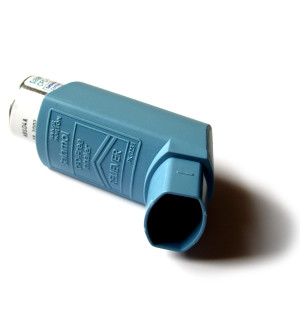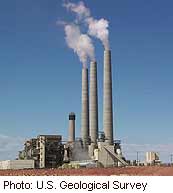- Skip Storing This Everyday Product in the Fridge Door
- Green Tea + B3 Pairing May Boost Brain Health
- Navigating Your Midlife Crisis: Embracing New Possibilities
- City Raccoons Showing Signs of Domestication
- Mapping the Exposome: Science Broadens Focus to Environmental Disease Triggers
- One Week Less on Social Media Linked to Better Mental Health
- Your Brain Changes in Stages as You Age, Study Finds
- Some Suicide Victims Show No Typical Warning Signs, Study Finds
- ByHeart Formula Faces Lawsuits After Babies Sickened With Botulism
- Switch to Vegan Diet Could Cut Your Greenhouse Gas Emissions in Half
EPA Issues Tougher Rules on Ozone Emissions


New regulations to reduce emissions of the smog-causing pollutant ozone from power plants and factories were issued Wednesday by the U.S. Environmental Protection Agency.
Ozone has been linked to asthma, heart disease and premature death.
The new rules would lower the current limit for ozone pollution from 75 parts per billion to between 65 to 70 parts per billion, the EPA said.
“Bringing ozone pollution standards in line with the latest science will clean up our air, improve access to crucial air quality information and protect those most at risk,” EPA Administrator Gina McCarthy said in an agency news release.
According to the New York Times, the latest ozone emission limits are still less of a reduction than the 60 parts per billion limit sought by environmental groups. However, the EPA proposal will also ask for public comment on a 60-parts-per-billion limit, which means the final regulation could be lower than what is being proposed, the Times reported.
Reductions in ozone emissions have been sought by public health groups for years.
“The EPA’s proposal to strengthen the standard is a step forward in the fight to protect all Americans from the dangers of breathing ozone pollution, especially to protect our children, our older adults and those living with lung or heart disease,” Harold Wimmer, president of the American Lung Association, said in a statement.
However, Wimmer believes the new rules don’t go far enough. “We are concerned that EPA did not include 60 parts per billion in the range, though it was the clear recommendation of independent scientists as well as health and medical societies, including the American Lung Association,” he said.
“The scientific record clearly shows that a standard of 60 parts per billion would provide the most public health protection,” Wimmer added. “We will continue to push the agency to adopt standards based on the scientific evidence.”
However, industry groups claim the new limits would harm the economy and provide little public health benefit.
“Air quality has improved dramatically over the past decades, and air quality will continue to improve under the existing standards,” Howard Feldman, director of regulatory affairs for the American Petroleum Institute, which lobbies for the oil industry, told the Times.
“The current review of health studies has not identified compelling evidence for more stringent standards, and current standards are protective of public health,” he said.
But two lung health experts agreed with the ALA that the new standards are long overdue.
“It is welcome news that air pollution will be lessened by this legislation,” said Dr. Len Horovitz, a pulmonary specialist at Lenox Hill Hospital in New York City. “It is well known that asthma is linked to ozone. Even atherosclerosis [hardening of the arteries] has been linked to air pollution in urban environments.”
Dr. Marc Wilkenfeld is chief of the division of occupational and environmental medicine at Winthrop-University Hospital in Mineola, N.Y. He agreed that, “a reduction in ozone levels is a critical factor in improving public health. The reduction will ultimately save lives.”
The new ozone standards are the latest in a series of EPA moves to reduce air pollution. Next year, the agency is expected to finalize two new rules meant to reduce climate change-causing greenhouse gas emissions from coal-fired power plants, the Times reported.
More information
There’s more on air pollution at the American Lung Association.
Source: HealthDay
Copyright © 2025 HealthDay. All rights reserved.










